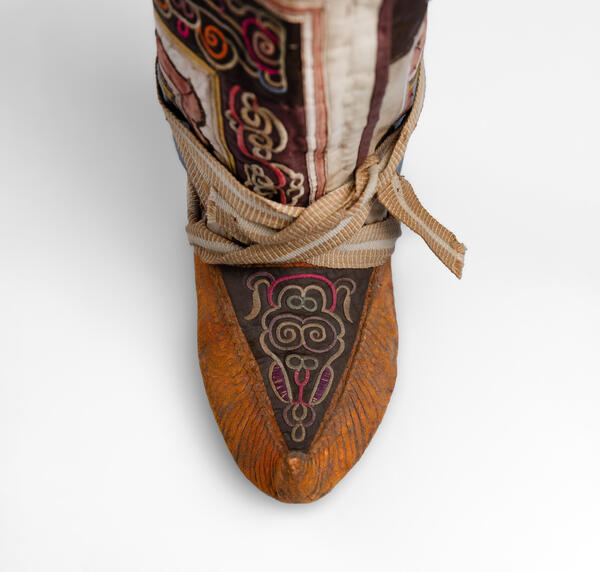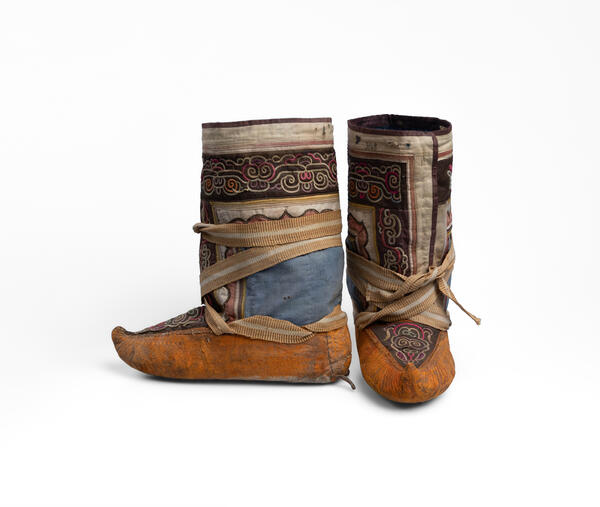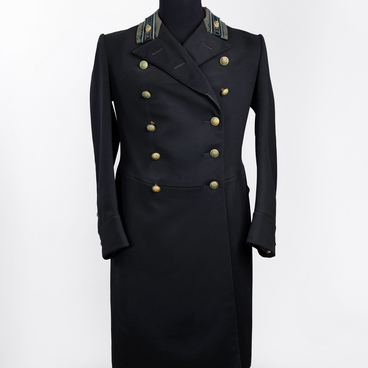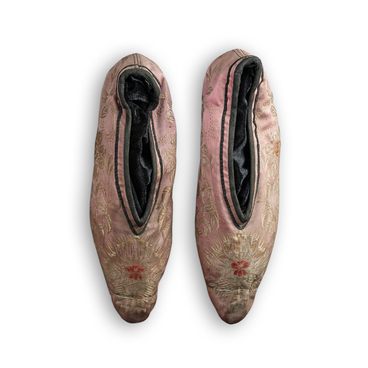Since ancient times, people in the Far East have processed the skins of mammals and fish to make clothes. In the northern regions the reindeer has always been the most widespread animal. Therefore, people sewed warm clothes and shoes from its skins. Various modifications of such footwear were common among the peoples of the Russian Far East. The exhibition of the Vladimir Arseniev Museum of Far East History features unty boots.
In the Evenki language, the word “unta” means “shoe” or “boot”. It is a kind of low boot-type footwear worn over gaiters in the cold season. Other indigenous peoples of the region, such as the Nanai and Udege people, also use the name “torbasa” or “torbaza” to describe fur footwear.
The double-sided fur and felt soles of the boots protected the feet of their owners from the bitterest frosts. It is noteworthy that in some cases, unty were not just an element of everyday life, but also served as an excellent example of applied art of the indigenous population of the region. Craftsmen often decorated shoes with pieces of deerskin or colored fabric. Shoes could also be decorated with embroidery in various techniques, as well as with beads and decorative stitches. Making one pair of boots could take on average up to ten different pieces of kamus in order to ensure the color matching. Kamus, i.e. the skin of animal shins, was often selected not so much for its color as for its physical characteristics, such as the strength of the skin and short fur. Reindeer skins are considered to be the most widespread, but the Koryaks favored bearded seal and walrus skins for winter footwear. If they are carefully handled, boots can serve for quite a long time, thanks to which they are widely spread.
The unty boots from the
museum’s collection were made in the middle of the 20th century, so there is a
large number of multicolored fabric elements decorated with buttons and stamped
ribbons. The unty on display were brought by the museum employee Yury Degtyaryov
from an expedition to the Udege village of Gvasyugi, Khabarovsk Krai, in the
1950s. The village is notable for the fact that in 1905 the first Udege writer
Dzhansi Kimonko was born there. Besides, he was the first Udege writer to
receive a systematic education.




